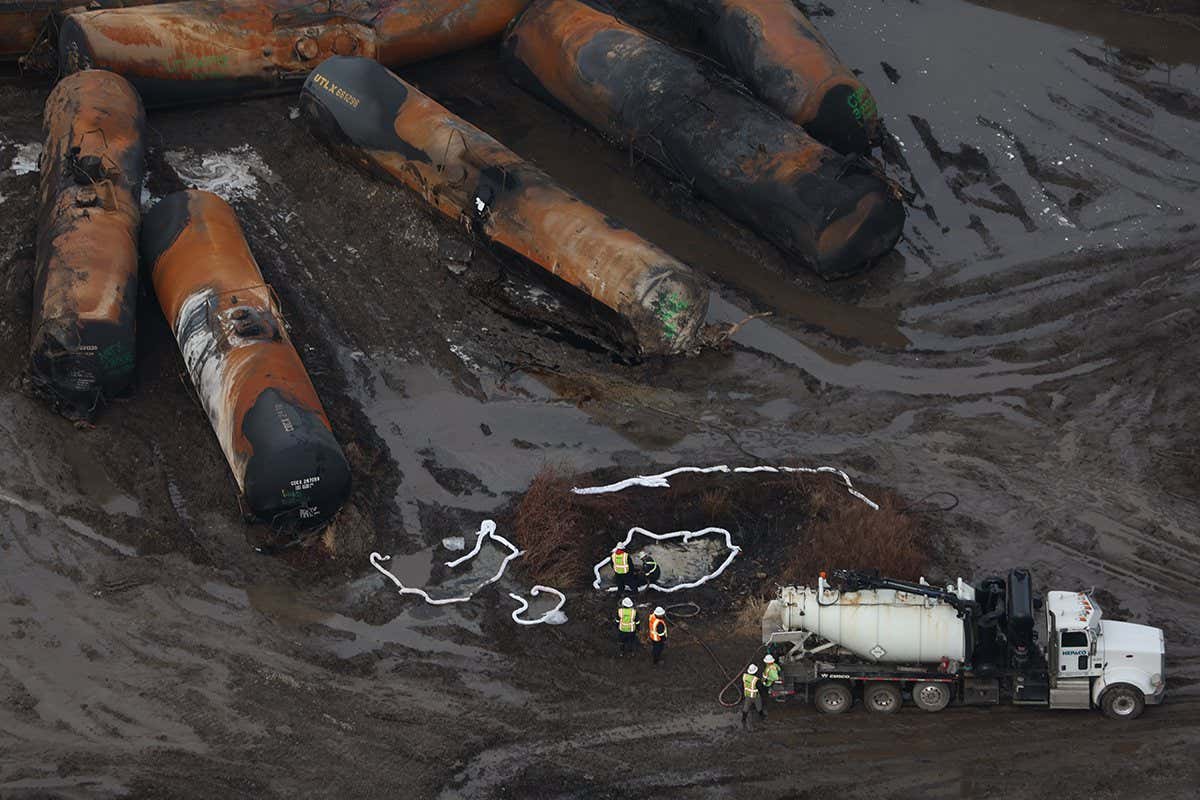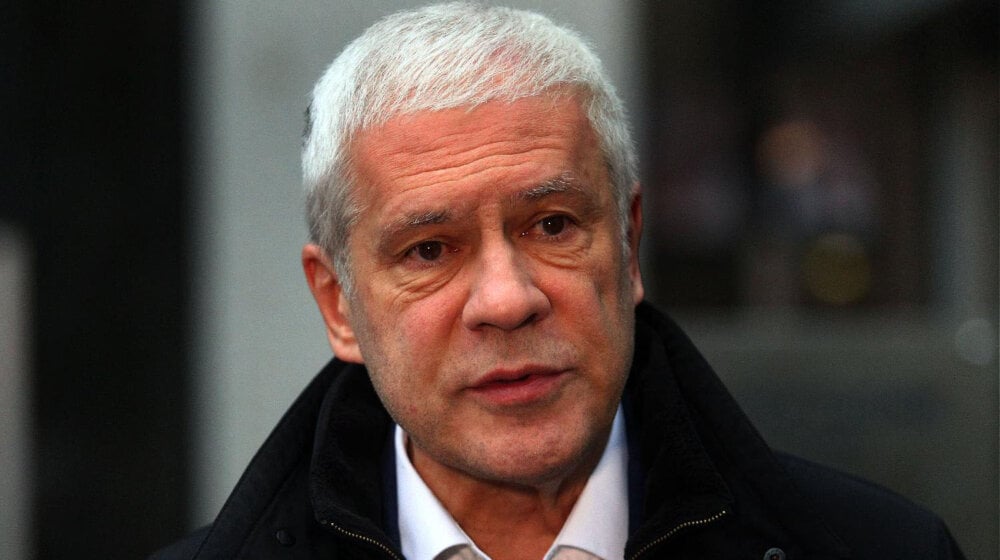Ohio Train Derailment: The Extended Impact Of Toxic Chemical Contamination On Buildings

Table of Contents
Types of Chemical Contamination and Their Impact on Buildings
The Ohio train derailment released a cocktail of toxic chemicals, each with its own potential to damage building materials and compromise structural integrity. Understanding the specific properties of these chemicals is crucial for assessing the extent of the damage and planning effective remediation strategies.
-
Vinyl Chloride: This colorless gas is a known carcinogen and can degrade various building materials, including plastics, rubbers, and some types of paint. Long-term exposure can lead to structural weakening and off-gassing, contaminating the indoor air.
-
Butyl Acrylate and Ethylhexyl Acrylate: These acrylates are commonly used in paints, coatings, and adhesives. Exposure can cause respiratory irritation, skin sensitization, and potential long-term health problems. Their presence in building materials can lead to leaching and indoor air contamination.
The impact on buildings manifests in several ways:
- Corrosion of Metal Components: Exposure to these chemicals can accelerate the corrosion of metal pipes, structural supports, and HVAC systems, compromising the building's structural integrity and potentially leading to dangerous failures.
- Weakening of Structural Integrity: The degradation of building materials caused by chemical exposure can lead to structural weakening, making buildings more vulnerable to damage from weather events or other stresses.
- Contamination of Building Systems: HVAC systems and plumbing can become contaminated, distributing the chemicals throughout the building and exposing occupants to harmful substances.
- Indoor Air Quality Degradation: Off-gassing from contaminated building materials can significantly degrade indoor air quality, posing serious health risks to occupants. Detecting and assessing the extent of this contamination requires specialized testing and expertise.
Challenges in Cleaning and Remediation of Contaminated Buildings
Cleaning and remediating buildings affected by the Ohio train derailment presents a complex and multifaceted challenge. The presence of multiple toxic chemicals necessitates a comprehensive and carefully planned approach.
-
Complex Decontamination Process: The remediation process typically involves several steps: initial site assessment and sampling to determine the extent of contamination; removal of heavily contaminated materials; air scrubbing to remove airborne contaminants; and thorough surface cleaning and decontamination of remaining building elements.
-
High Costs of Remediation: The specialized equipment, skilled labor, and extensive testing required for proper decontamination result in substantial costs, often exceeding the financial capacity of individual homeowners or small businesses.
-
Insurance Claim Difficulties: Securing adequate insurance coverage for damage resulting from the derailment can prove extremely challenging, leaving many property owners with significant financial burdens.
-
Legal Liabilities: Establishing liability and navigating the legal complexities of cleanup and compensation can be a protracted and costly process, involving property owners, the railroad company, and potentially other responsible parties.
Long-Term Health Risks Associated with Building Contamination
Exposure to residual chemicals in contaminated buildings poses significant long-term health risks to occupants.
-
Respiratory Problems: Inhalation of airborne contaminants can lead to respiratory illnesses such as asthma, bronchitis, and other respiratory complications.
-
Cancer: Exposure to carcinogens like vinyl chloride increases the risk of developing various cancers.
-
Other Chronic Health Conditions: Long-term exposure to these chemicals can lead to a range of other chronic health problems, including neurological disorders, liver damage, and reproductive issues.
-
Importance of Monitoring: Regular air quality testing and medical monitoring for building occupants are crucial for early detection and intervention to mitigate potential long-term health consequences. Comprehensive health assessments are essential for residents in affected areas.
The Economic Impact of Building Contamination Following the Derailment
The economic impact of the Ohio train derailment extends far beyond the immediate costs of cleanup.
-
Depressed Property Values: The stigma associated with chemical contamination can significantly depress property values in affected areas, impacting the financial well-being of homeowners and the broader community.
-
Economic Burden of Cleanup: The high costs of remediation place a significant economic burden on both individuals and the community, potentially hindering economic recovery.
-
Challenges Securing Insurance Claims: Difficulty in securing insurance claims further exacerbates the financial strain on affected property owners.
-
Long-Term Economic Consequences: The long-term economic consequences of the derailment include hampered economic growth, reduced property tax revenue, and challenges in attracting new businesses and residents to the affected area. Community recovery and redevelopment will require significant investment and long-term planning.
Conclusion
The Ohio train derailment's impact extends far beyond the immediate aftermath, posing significant long-term challenges to the health and safety of those living and working in contaminated buildings. Understanding the types of chemical contamination, the complexities of remediation, the associated health risks, and the substantial economic consequences is crucial for effective response and recovery. Continued monitoring, thorough remediation efforts, and proactive support for affected residents are vital to mitigate the extended impact of this environmental disaster. For more information on the effects of the Ohio train derailment and its impact on building contamination, consult relevant government agencies and environmental experts. Don't hesitate to seek professional assistance if you suspect your building has been affected by toxic chemical contamination following the Ohio train derailment.

Featured Posts
-
 Ai Driven Podcast Creation Transforming Repetitive Data Into Poop Ular Content
May 20, 2025
Ai Driven Podcast Creation Transforming Repetitive Data Into Poop Ular Content
May 20, 2025 -
 Legal Ruling Impacts E Bay Section 230 Doesnt Shield Banned Chemical Sales
May 20, 2025
Legal Ruling Impacts E Bay Section 230 Doesnt Shield Banned Chemical Sales
May 20, 2025 -
 Eyresi Efimereyonton Iatron Stin Patra Savvatokyriako
May 20, 2025
Eyresi Efimereyonton Iatron Stin Patra Savvatokyriako
May 20, 2025 -
 Friis Inleder Med Bortaseger Tuff Kamp Mot Malta
May 20, 2025
Friis Inleder Med Bortaseger Tuff Kamp Mot Malta
May 20, 2025 -
 Tadic O Putinu Razotkrivanje Putinovih Ciljeva U Pregovorima
May 20, 2025
Tadic O Putinu Razotkrivanje Putinovih Ciljeva U Pregovorima
May 20, 2025
